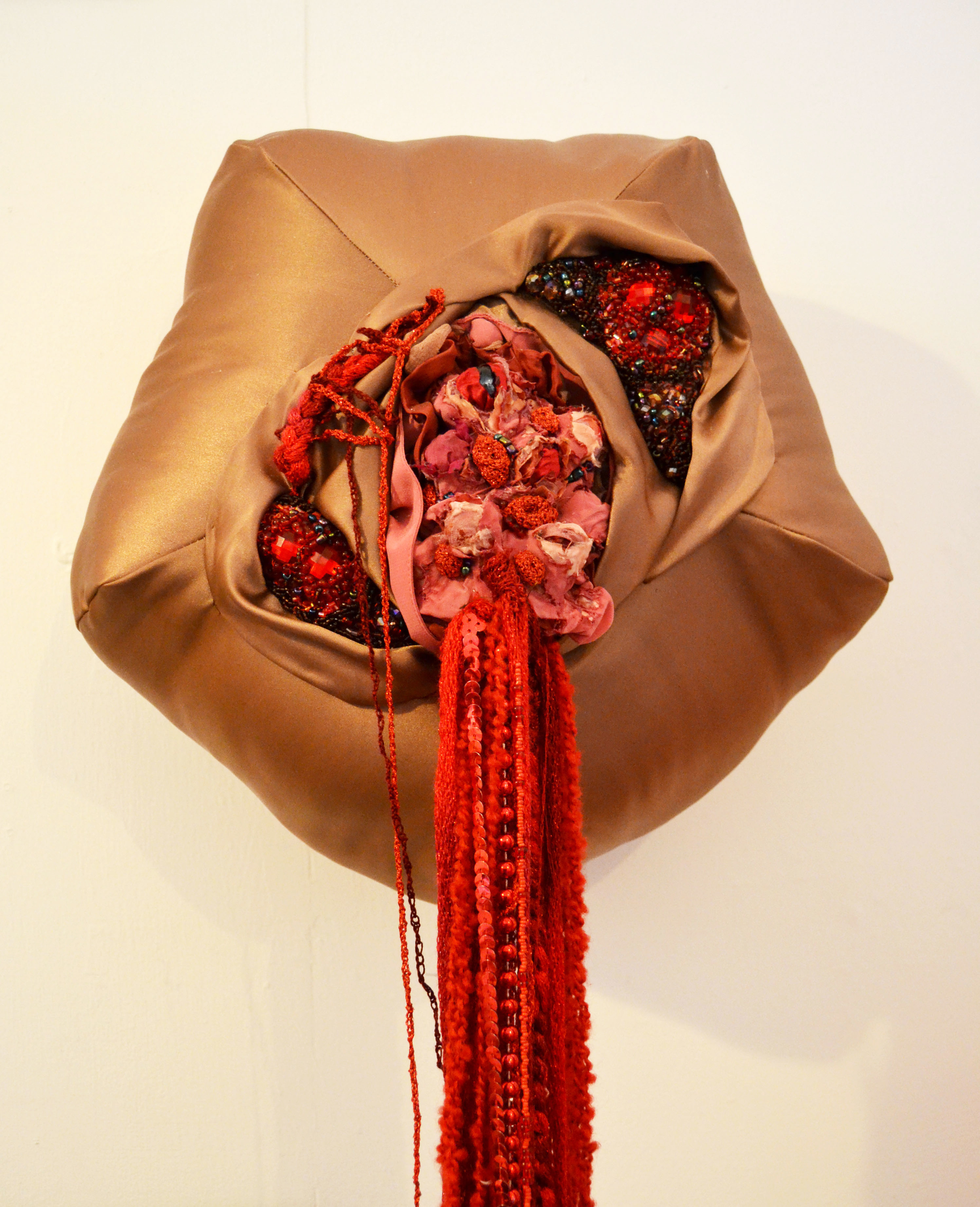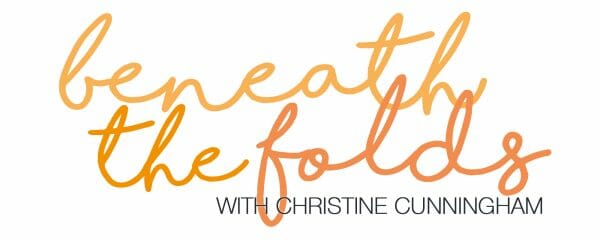
As an artist I am fascinated with unorthodox materials and passionate about recycling. My goal is to create beauty from items no longer valued in our throw away society. I have worked with plastics, rubber, leather, metal, hair and vintage fabrics. Some items present themselves while others are selected for purpose.
Unusual Materials
The inner lining of an old cushion provides an intricate fragility in the disintegrated layers of wadding and cotton. Stems in ‘Abstract Flower Design B’ are carefully manufactured to celebrate the unique structure with frayed edges a source of natural texture. Threadbare fabrics capture the ageing process beautifully.
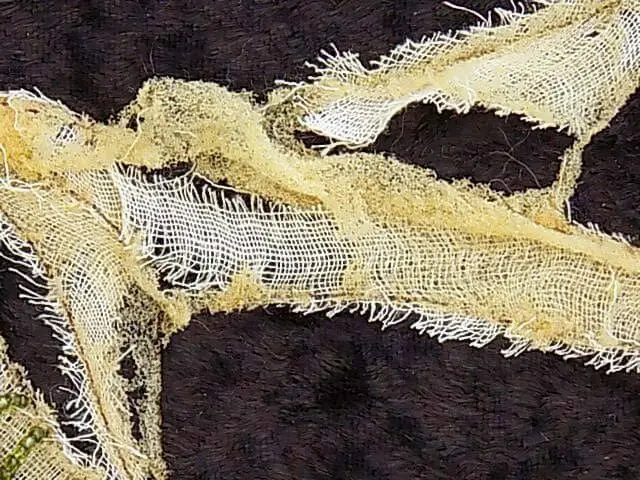
Hair is a wonderful medium in terms of it’s texture and ability to be moulded. 3D flower cups are created from cat hair in ‘Abstract flower design E’. The texture is very soft and fluffy, the hairs fine and delicate, easily moulded by layering and teasing into shape. I have a regular supply from my cat, Porschapoo, who loves to be brushed. I will continue to use this in my work.
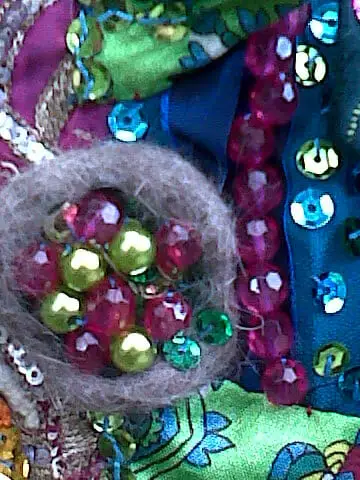
I used my own hair (following chemotherapy) in ‘V and A’ to line the vagina nest created from hand crafted silk flowers. Human hair is more coarse in texture and holds it’s shape well when moulded because of it’s density. Created from layering and teasing the hair into one mass, contouring and hand stitching to secure to the outer wall and background fabric. Note the contoured edge between the outer and inner structures. Adorned with Indian flower beads.
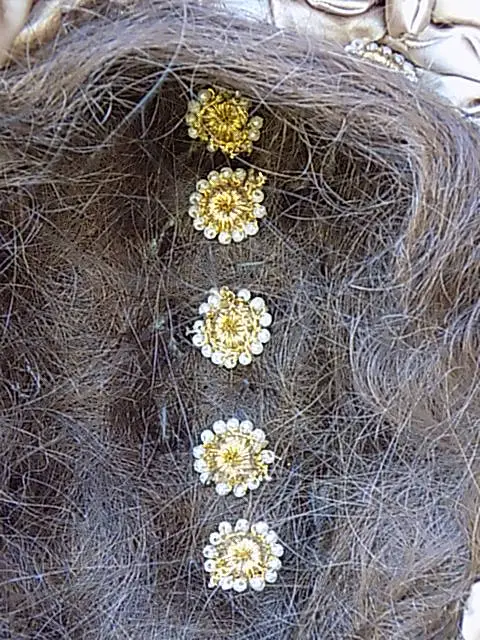
Using Plastics in Art
Layers of traditional fabrics (wadding, open weave cottons similar to the dressings used after surgery and frayed organza) are layered with plastics (sheets, bags and bubblewrap) to create the density of the body in ‘Cancer 2’. The variety in terms of strength and flexibility makes it a versatile medium and a good contrasting texture to fabric. It possesses a light reflective quality which naturally casts shadow and enhances depth.
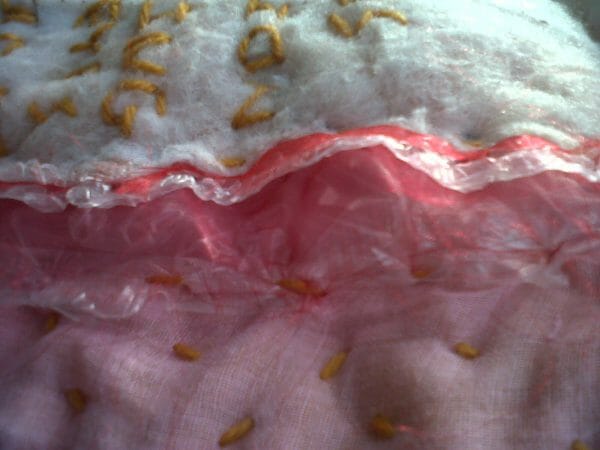
Using found objects in art can be visually striking and perfectly demonstrate a subject. A fur coat pocket provides a ready made vagina in ‘Pocket’. The contouring of the folds is held in place with a simple stitch. There is a natural rhythm between the contrasting textures of fur and silk.
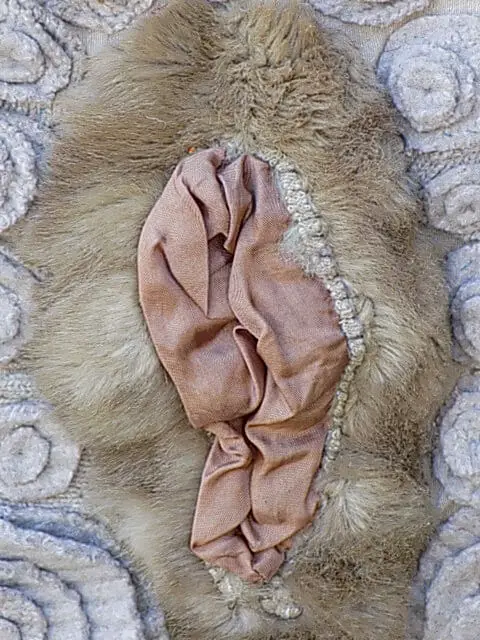
The metal underwire from a bra represents the absent breast in ‘Cancer 1’. A powerful contrast of metal on fabric, strength and weakness. The old linen background, starched because it is falling apart, threadbare and torn in places, embodies our fragility. Flesh coloured sequins (stitched in a pale blue vein) are light reflective, our hope that the treatment will prolong life. And it does. I am now cancer free and determined to live forever! Date of surgery in a blood red silk thread.

My favourite item is the lace topped stocking, moulded and stitched to form the anus in ‘V and A’. An everyday item capturing the intricacy of the body part as well as delivering the sexual element. Adorned in a diamante bracelet to catch the attention of the voyeur. An abstract interpretation of the sex industry.
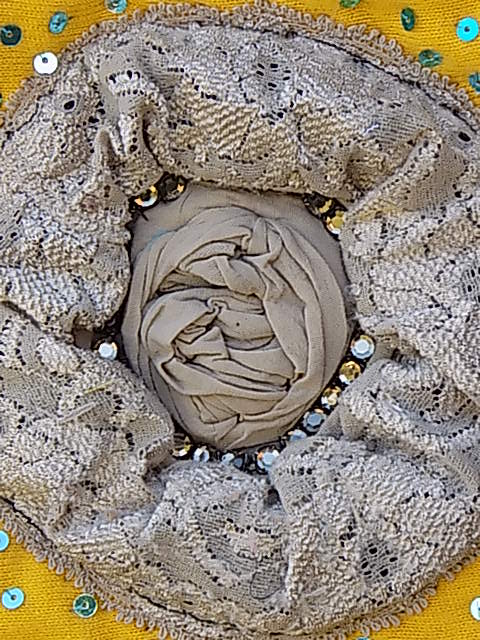
A rubber water carrier (from childhood camping trips over thirty years ago) provides the abstract body part in ‘Menstruation’. It’s simple design and strong rubber material is purely functional and age appropriate for the onset of the fertility cycle in puberty. There is no sensuous or sexual element here, despite the cluster of red sequins adorning the outer edge. Simply a girl starting her period.
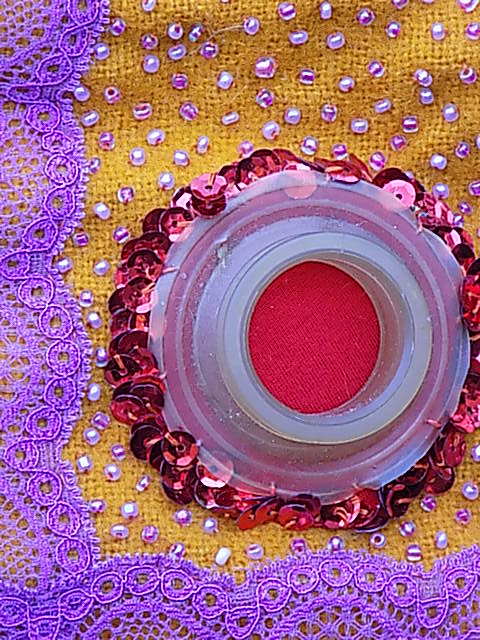
My next adventure is to use snake skins which are beautifully patterned and textural. My niece and nephew keep them as pets. I collect them after the shedding process.
I hope you have found my unusual materials an interesting read. Visit my websites to view more textiles by Christine Cunningham at The Womanhood Collection and The Natural Collection



